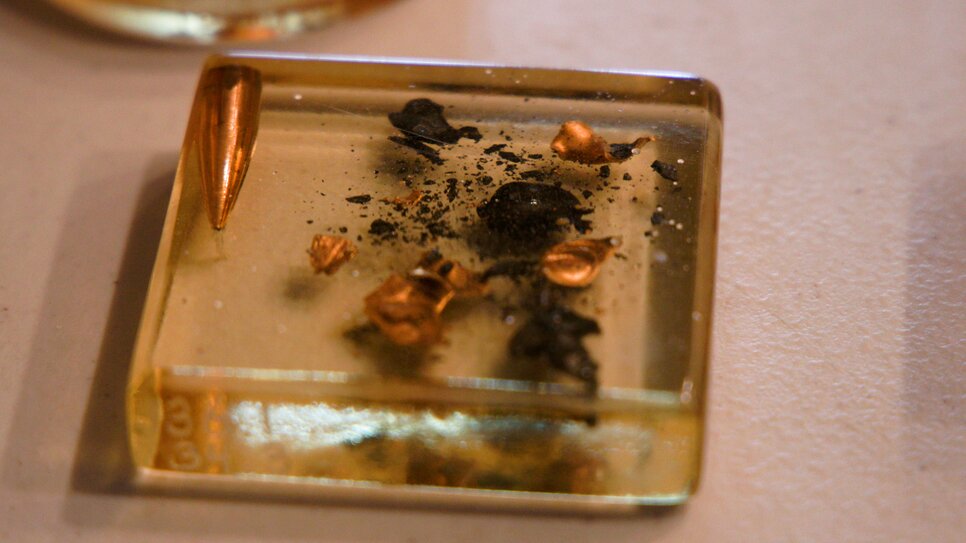According to Kindle, it’s important to make a distinction between ammo used on a range that has the tools to reclaim spent bullets and ammo used in the field — bullets used for hunting pose a much larger risk to wildlife, but they only make up 20% of total ammunition.
Kindle’s journey to teaching others about lead-free ammunition began 17 years ago. He was struggling to process an elk he’d shot with a lead bullet.
“I was trying to clean it apart and was having trouble finding stuff that I wanted to keep because it was really beat up,” he said. A friend called Kindle and told him about the Wisconsin Department of Natural Resources’ studies on lead fragmentation.
“They were shooting pig cadavers with lead ammunition and then X-raying them and showing how they fragmented,” said Kindle. At the time, he had a two-year-old son and his wife was pregnant with his daughter.
“I was scared for my family. And I was like, oh my gosh, am I giving my family lead?” he said.
Kindle acknowledges that there are many hunters who have consumed game killed with lead for years without experiencing side effects.
“Many hunters have eaten animals harvested with lead ammunition for their whole lives and aren't experiencing or exhibiting any overt effects of lead poisoning or anything like that,” he said. “But I think if you took just about anyone and you said, ‘here's a glass of water and it doesn't have lead, and here's a glass of water and it has lead that's below what is considered safe,’ almost everybody would still pick the one without lead.”
Researchers have studied the effects of lead on species for decades. In 1991, the United States adopted federal restrictions against using lead shot on waterfowl. Since then, efforts have focused primarily on reducing lead ammunition for big game hunting. Research by the Peregrine Fund, a raptor conservation group, indicates that “at least 30 species of terrestrial birds are at risk of lead poisoning from spent ammunition.”
“The more we learn, the more questions we have. But also we have to keep in mind that it’s what we do with that. Science alone doesn't necessarily turn into conservation,” said Parish.
Davenport, who is a hunter herself, believes that the tradition of using lead makes it difficult to change people’s behavior.
“When you've done something the same way for generations, there's sometimes the thought that we don't need to change,” she said.
Despite the challenge of changing people’s behavior, Davenport and other activists are focused on education rather than regulation.
“If we are going to impact change, on a big scale, it can't come from legislation. It can't come from bans. It must come from those that are using the tool,” she said.
Even in California, which banned lead ammunition for hunting in 2019, advocates believe that more education is needed to make their efforts stick. In California, bans on lead ammo have led to significant decreases in elevated blood-lead levels for vultures and golden eagles, but “lead poisoning continues to be the primary barrier to condor recovery.”
Bans and regulations may be a more efficient way to change behavior, but they also require more political capital to enact.
“We think that as hunters learn this stuff and they hear from credible folks, who hunt themselves, and know the ballistics and know the impacts scientifically, that most hunters will go, ‘I didn't know about that,’” said Kindle.
At the moment, copper bullets remain slightly more expensive and harder to find in stores.
Kindle believes that with time, hunters will make the switch.
“Despite the fact that we go kill animals, most hunters are huge wildlife advocates,” said Kindle. “Who doesn't love a bald eagle? Who does love a red tailed hawk or golden eagles? None of us want to see those things inadvertently harmed.”
Cormac McCrimmon is a multimedia journalist at Rocky Mountain PBS. Cormacmccrimmon@rmpbs.org



